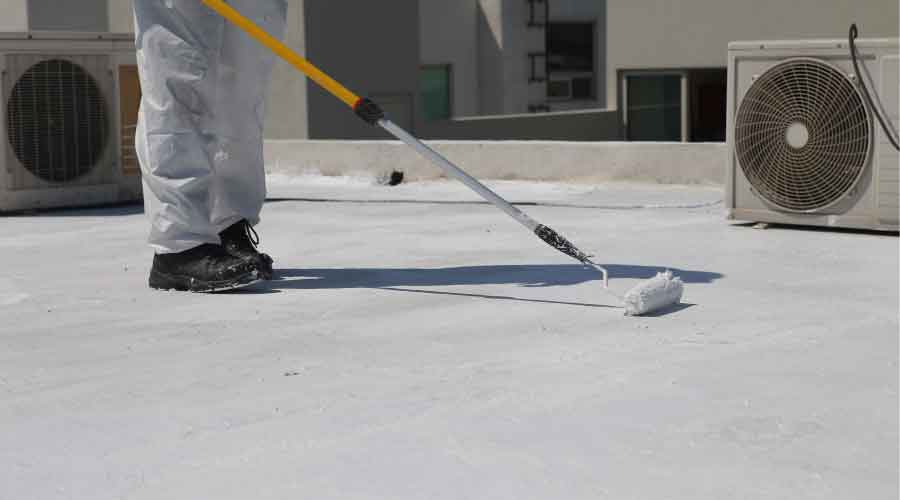Different Substrates Require Different Roof Coatings
After managers determine a coating’s function, they must consider the type of roof system being coated. Coatings suppliers generally offer two types of coatings: all-purpose, which are suitable for a range of substrates; and application-specific coatings, which are tailored to one type or a limited range of substrates.
Different substrates require different coatings. A coating’s adhesion might depend as much on the substrate’s characteristics as on the coating type. In general, it is more difficult for coatings to adhere to hard, smooth, chemically inert surfaces and easier on rough, irregular, chemically active surfaces.
A coating’s adhesion to a substrate often improves when the installers put down a primer or base coat. Coatings manufacturers recommend certain primers or base coats for managers trying to match a specific topcoat with a specific substrate. Managers should use only the base coat or primer specified by the coating’s manufacturer.
Primers and basecoats for built-up roofs offer good examples. Manufacturers have designed products specifically to work on these surfaces. They work well on these often-hot surfaces by bonding to the asphalt and preventing it from bleeding into the white topcoat.
Enhancing a roof’s sustainability typically requires recoating to extend its service life. Most coatings are field-applied, and their success depends on real-world conditions and workers’ skills. To ensure proper curing, an experienced contractor should pay careful attention to consistent application and changing weather conditions.
Related Topics:














